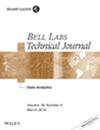下载PDF
{"title":"3D Beamforming: Performance Improvement for Cellular Networks","authors":"Hardy Halbauer, Stephan Saur, Johannes Koppenborg, Cornelis Hoek","doi":"10.1002/bltj.21604","DOIUrl":null,"url":null,"abstract":"<p>The beam pattern of a mobile communication base station has significant impact on the performance of a cellular network. Three-dimensional (3D) beamforming combines the horizontal beam pattern adaptation, as applied for beamforming and multiple input multiple output (MIMO) schemes, with a vertical antenna pattern adaptation. The recent availability of new flexible antenna techniques enables a fully dynamic antenna pattern adaptation which can be specified per resource block and user equipment (UE), and makes 3D beamforming practically feasible. This paper describes the basic principles of 3D beamforming, including the impact of downtilt adaptation on the physical layer as well as the potential of its combination with beam coordination involving the media access control (MAC) layer. Our investigations assumed the vertical main lobe of the beam pattern was geometrically pointed towards the UE. We discuss a number of different realization options and simulation results including a Bell Labs field trial with vertical beam steering. Using wireless systems with state of the art Long Term Evolution (LTE) signal format and including the lightRadio™ antenna array, our trials in the Stuttgart testbed verified the basic predicted properties and potential advantages of 3D beamforming. © 2013 Alcatel-Lucent.</p>","PeriodicalId":55592,"journal":{"name":"Bell Labs Technical Journal","volume":"18 2","pages":"37-56"},"PeriodicalIF":0.0000,"publicationDate":"2013-08-28","publicationTypes":"Journal Article","fieldsOfStudy":null,"isOpenAccess":false,"openAccessPdf":"https://sci-hub-pdf.com/10.1002/bltj.21604","citationCount":"78","resultStr":null,"platform":"Semanticscholar","paperid":null,"PeriodicalName":"Bell Labs Technical Journal","FirstCategoryId":"1085","ListUrlMain":"https://onlinelibrary.wiley.com/doi/10.1002/bltj.21604","RegionNum":0,"RegionCategory":null,"ArticlePicture":[],"TitleCN":null,"AbstractTextCN":null,"PMCID":null,"EPubDate":"","PubModel":"","JCR":"Q1","JCRName":"Engineering","Score":null,"Total":0}
引用次数: 78
引用
批量引用
Abstract
The beam pattern of a mobile communication base station has significant impact on the performance of a cellular network. Three-dimensional (3D) beamforming combines the horizontal beam pattern adaptation, as applied for beamforming and multiple input multiple output (MIMO) schemes, with a vertical antenna pattern adaptation. The recent availability of new flexible antenna techniques enables a fully dynamic antenna pattern adaptation which can be specified per resource block and user equipment (UE), and makes 3D beamforming practically feasible. This paper describes the basic principles of 3D beamforming, including the impact of downtilt adaptation on the physical layer as well as the potential of its combination with beam coordination involving the media access control (MAC) layer. Our investigations assumed the vertical main lobe of the beam pattern was geometrically pointed towards the UE. We discuss a number of different realization options and simulation results including a Bell Labs field trial with vertical beam steering. Using wireless systems with state of the art Long Term Evolution (LTE) signal format and including the lightRadio™ antenna array, our trials in the Stuttgart testbed verified the basic predicted properties and potential advantages of 3D beamforming. © 2013 Alcatel-Lucent.
3D波束成形:蜂窝网络的性能改进
移动通信基站的波束方向图对蜂窝网络的性能有重大影响。三维(3D)波束成形将应用于波束成形和多输入多输出(MIMO)方案的水平波束方向图自适应与垂直天线方向图自适应相结合。新的灵活天线技术的最新可用性实现了可以按资源块和用户设备(UE)指定的完全动态的天线方向图自适应,并使3D波束成形在实践中可行。本文描述了3D波束形成的基本原理,包括下倾角自适应对物理层的影响,以及它与涉及媒体访问控制(MAC)层的波束协调相结合的潜力。我们的研究假设波束方向图的垂直主瓣在几何上指向UE。我们讨论了许多不同的实现选项和模拟结果,包括贝尔实验室的垂直波束转向现场试验。使用具有现有技术的长期演进(LTE)信号格式并包括lightRadio的无线系统™ 天线阵列,我们在斯图加特试验台的试验验证了3D波束形成的基本预测特性和潜在优势。
本文章由计算机程序翻译,如有差异,请以英文原文为准。

 求助内容:
求助内容: 应助结果提醒方式:
应助结果提醒方式:


